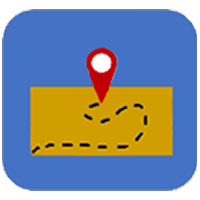Landscape Analysis
View fact sheet.
Wildfire risk, species conservation, and ecosystem management all depend on seamless spatial data. LANDFIRE may already be supporting your mission if you have ever asked questions like these:
- What is the wildfire risk within a particular landscape?
- Where can I get data to evaluate fauna habitats?
- If ignited, how might a wildfire move through a particular landscape?
- How does the vegetation cover in one area compare with the vegetation in another area?
- How have disturbances in the past affected current forest conditions?
- What is the spatial distribution of a certain vegetation type?
- Where can I find spatial vegetation and structure data for all lands, regardless of ownership?
National LANDFIRE datasets can help answer all these questions for areas of interest within the United States and insular areas at the 30-meter pixel level. LANDFIRE is a Federal program that provides a suite of spatial datasets indicating areas of disturbance, vegetation and fuels distributions and structure, and historical conditions. Although LANDFIRE is the definitive dataset used by the interagency fire community for surface and canopy fuels, the program also maps more than 30 spatial datasets that can be used for a variety of purposes.
Webinar recording.
To aid practitioners in planning and implementing conservation actions, we recently developed the Grassland and Sagebrush Conservation Portal in the web platform, ArcGIS Online. This portal provides access to geospatial resources such maps, apps, and data developed by the U.S. Fish and Wildlife Service and its partners as well as other open-access resources. We intend to grow the resources in the portal in ways that are complementary to other online platforms. The Service’s development team will provide a tour of the portal, answer questions, and ask for suggestions for relevant resources that could be added.
The webinar will be presented by the U.S. Fish and Wildlife Service team that developed the Grassland and Sagebrush Conservation Portal. For questions, please contact mary_mcfadzen@fws.gov
View article.
This study involved a review of available spatial products to assess advances in, and barriers to, applying contemporary model-based maps to support rangeland management. We found dozens of regional data products describing cheatgrass or annual herbaceous cover and few maps describing ventenata or medusahead. Over the past decade, IAG spatial data increased in spatial and temporal resolution and increasingly used response variables that indicate the severity of infestation such as percent cover. Despite improvements, use of such data is limited by the time required to find, compare, understand, and translate model-based maps into management strategy. There is also a need for products with higher spatial resolution and accuracy. In collaboration with a multipartner stakeholder group, we identified key considerations that guide selection of IAG spatial data products for use by land managers and other users. On the basis of these considerations, we discuss issues that contribute to a research-implementation gap between users and product developers and suggest future directions for improved development of management-ready spatial products.
View article.
This study tested four flight frequencies during the growing season. Classification accuracy based on reference data increased by 5–10% between a single flight and scenarios including all conducted flights. Accuracy increased from 50.6% to 61.4% at the drier site, while at the more mesic/densely vegetated site, we found an increase of 59.0% to 64.4% between a single and multiple flights over the growing season. Peak green-up varied by 2–4 weeks within the scenes, and sparse vegetation classes had only a short detectable window of active photosynthesis; therefore, a single flight could not capture all vegetation that was active across the growing season. The multi-temporal analyses identified differences in the seasonal timing of green-up and senescence within herbaceous and sagebrush classes. Multiple UAV measurements can identify the fine-scale phenological variability in complex mixed grass/shrub vegetation.
Access maps.
Research teams at the USGS Earth Resources Observation and Science (EROS) Center have released a satellite-derived dataset that maps the recent history of the fire-fueling invasive annual grasses spreading through the Western U.S. in greater detail than ever before.
View article
We propose an integrated fire management approach in which all management activities before, during, and after wildfire are synergistic and improve long-term ecosystem response to fire. Harney County Wildfire Collaborative is adapting the Potential Operational Delineations (PODs) framework to improve fire outcomes and promote values at risk in the Stinkingwater Mountains pilot project area. The PODs framework serves to promote a broader geographic strategy for addressing the underlying causes of frequent and severe wildfires in the sagebrush ecosystem.
View article.
Oregon partners used new spatial data to develop a geographic strategy for management of invasive annual grasses at landscape scales across jurisdictional boundaries. The geographic strategy considers annual and perennial herbaceous cover along with site resilience and resistance in categorizing areas into intact core, transitioning, and degraded areas. The geographic strategy provides 1) a conceptual framework for proactive management, building upon similar work recently begun across the Great Basin, and 2) multi-scale spatial products for both policymakers and local managers to identify strategic areas for investment of limited resources.
Webinar recording.
Presented by: Crystal Stonesifer
Aircraft are important fire management tools, but their use can bring substantial costs and associated risks. We developed the Aviation Use Summary (AUS), which is a decision support framework to help track the location, timing, and amount of aircraft use in fire suppression; this information is presented in a way that helps guide decision makers through a structured risk assessment and a repeatable check-in process. Extensive use in large fire support has demonstrated the effectiveness of the framework, related limitations, and potential for future improvements and broad adoption in fire management.
Vegetation dynamics models: Comprehensive set for natural resource assessment and planning in the US
View article.
These products establish the first comprehensive national baseline for measuring vegetation change in the USA, providing land managers and policymakers with a tool to support vegetation restoration and fuel management activities at regional to national scales. Users have applied these products to support a variety of land management needs including exploring ecosystem dynamics, assessing current and desired conditions, and simulating the effects of management actions. In an era of rapid ecological change, these products provide land managers with an adaptable tool for understanding ecosystems and predicting possible future conditions.
View article.
More than a century after first appearing in the region, exotic annual grasses continue to proliferate and establish dominance in new environments across the Great Basin. Accelerated, strategic intervention is critically needed to conserve vulnerable sagebrush and salt desert shrub communities not yet heavily invaded. In this era of warming, future climate provides important context for selecting from among alternative management actions and judging long-term prospects of success.





